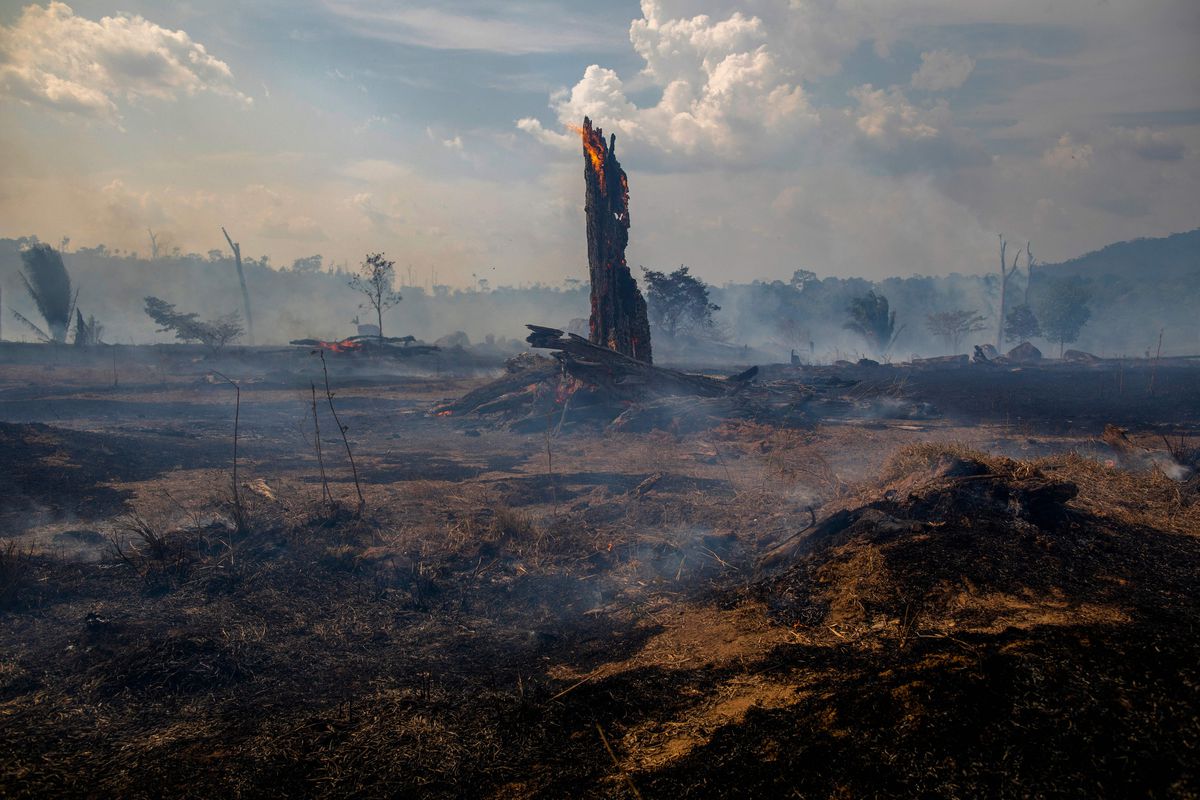The world’s tropical forests are rapidly losing their ability to absorb carbon dioxide from greenhouse gas emissions, with the Amazon rainforest at risk of turning from carbon sink to source within 15 years, researchers warned Wednesday.
Tropical forests provide humans with medicine, food, shelter and water and currently account for around half of all terrestrial carbon absorption.
But they are rapidly getting saturated as manmade emissions continue to climb year on year.
Forests act as a carbon sink when the amount of carbon retrieved through photosynthesis outweighs that emitted by tree loss — be that through fire, drought, or deforestation.
But the rate of forest decline varies throughout the world, with the Amazon’s absorption ability dropping far faster than the tropical forests of sub-Saharan Africa.
A team of dozens of Europe- and Africa-based researchers monitored tree growth and mortality data from undisturbed forests across 11 countries in Africa stretching back over 50 years.
They then compared that data with similar measurements taken across more than 300 plots of Amazon rainforest.
They found that while there was some forest gain owing to increased CO2 levels — since trees grow faster in carbon-rich environments — the sink this provided was more than cancelled out by tree loss due to extreme heat and drought.
The team extrapolated their data to model tree loss patterns over the next 20 years.
Their paper, published in the journal Nature, estimated that the carbon sink capacity of the African forests studied will decline 14 percent by 2030.
In the Amazon, the forest’s carbon sink capacity is predicted to reach zero by 2035.
“This decrease is decades ahead of what even the most pessimistic climate models predicted,” said Wannes Hubau, a forest ecosystems expert at Belgium’s Royal Museum for Central Africa.
“Mortality is a natural part of the cycle of forest trees. However, by pumping so much CO2 in the air, we have accelerated this cycle and blew its magnitude up to unknown proportions,” he told AFP.
‘Even Faster Carbon Reductions’
Despite evidence that in particular the Amazon has been losing its carbon sink ability for decades, several of the emissions reductions scenarios envisioned in the Paris climate deal assume forests will be able to suck CO2 from the atmosphere over the long term.
Several countries have announced plans to plant more trees and many larger companies plan mass-scale afforestation schemes to offset their carbon emissions.
“We will have to rethink the climate models, but also climate mitigation strategies based on those models,” said Hubau.
Anja Rammig, from the Technical University of Munich’s School of Life Sciences, said the study’s findings should prompt a rethink in how much carbon mankind can emit and still meet the Paris goals of limiting warming to well below 2C.
“As well as strong protection for intact tropical forest, even faster reductions of anthropogenic greenhouse-gas emissions than those set out in the agreement will be needed to prevent catastrophic climate change,” she wrote in an editorial on the research.



